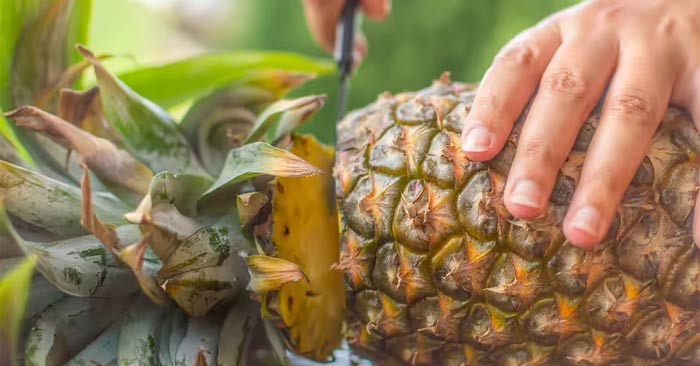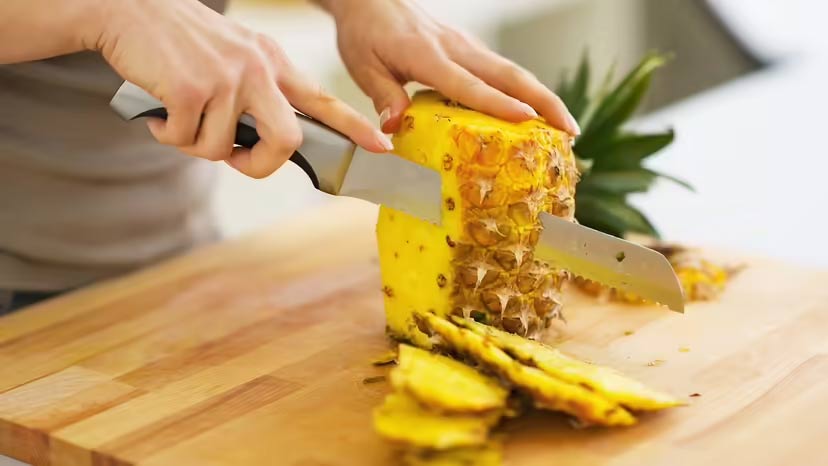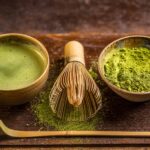Though prickly on the outside, pineapples are delicious and worth learning how to peel and slice. Here’s a quick and easy guide to getting your pineapple prep right.

Pineapples are a fantastic source of antioxidants and are packed with vitamin C, fiber, and manganese. They’re a super-healthy treat, but do you know how to cut a pineapple? For beginners, the spiky fruit can be a little intimidating, so here’s a guide to choosing the perfect pineapple and turning it into tasty chunks or rings, just like a pro.
How to Pick a Ripe Pineapple
Unlike some fruits, like bananas or peaches, pineapples aren’t harvested green and then ripened later. This means that a fresh pineapple will be ready to eat when it arrives at the market. Choose one with a strong, sweet scent and a firm, green top with healthy-looking leaves. If the leaves are brown or wilted, the pineapple was likely overripe when picked, and while it won’t continue to ripen, it may start to spoil. Also, check the body of the fruit for any bruises or discolored areas. The freshest pineapples will have firm, golden-yellow skin with no hint of brown.

A Step-by-Step Guide to Cutting Pineapple
Preparing a pineapple is a simple four-step process.
Step 1: Trim the Top and Bottom
Place the pineapple on a cutting board. Using a large knife, cut off the top and bottom of the pineapple, removing about 0.6 cm (1/4 inch) from each end. This ensures you get rid of the tough parts without wasting too much fruit.
Step 2: Slice Off the Peel
To peel the pineapple, hold it firmly on the cutting board and slice off the tough, spiky skin, cutting from top to bottom. After trimming the ends, stand the pineapple upright on its now-flat base. Hold it steady with one hand and use your other hand to slice downward, following the natural curve of the fruit. Cut just deep enough to remove the outer layer; you’ll want to cut about 0.6 cm (1/4 inch) into the fruit.
Step 3: Remove Any Remaining Eyes
Once you’ve removed the outer peel, you may still see some of the prickly eyes. Use a small, sharp knife, such as a paring knife or a chef’s knife, to carefully cut out these remaining eyes. Hold the pineapple upright and work your way around the fruit.
Step 4: Core and Slice
Now you have a neatly trimmed pineapple. It should resemble a cylinder, with the eyes and peel removed. Next, you’ll want to cut out the core, the tough, fibrous center that runs the length of the fruit. You can quarter the pineapple and then cut out this section. The eyes of the pineapple are inedible, so use a small, sharp knife to cut diagonally across each eye, removing them.
9 Summer Fruits That Taste Great and Help Relieve Rheumatoid Arthritis Pain and Inflammation
Summer is the perfect time to indulge in delicious fruits that can help reduce inflammation and boost joint health. For those suffering from rheumatoid arthritis, choosing the right fruits can also provide effective pain relief and reduce swelling. Get ready to explore 9 mouth-watering fruits that are not just a treat for your taste buds but also a natural remedy for your joints!
The Ugly, Unsung Tuber: A Powerful Cancer-Fighting “Superfood” Hiding in Plain Sight.
Sweet potatoes, a familiar sight in Vietnamese markets, are an affordable and delicious root vegetable packed with a surprising array of health benefits. This humble tuber boasts a wealth of valuable compounds, offering protection against cancer, stabilizing blood sugar levels, and promoting a healthy digestive system. Despite their accessibility and versatility, many people remain unaware of just how powerful this root vegetable can be.



































